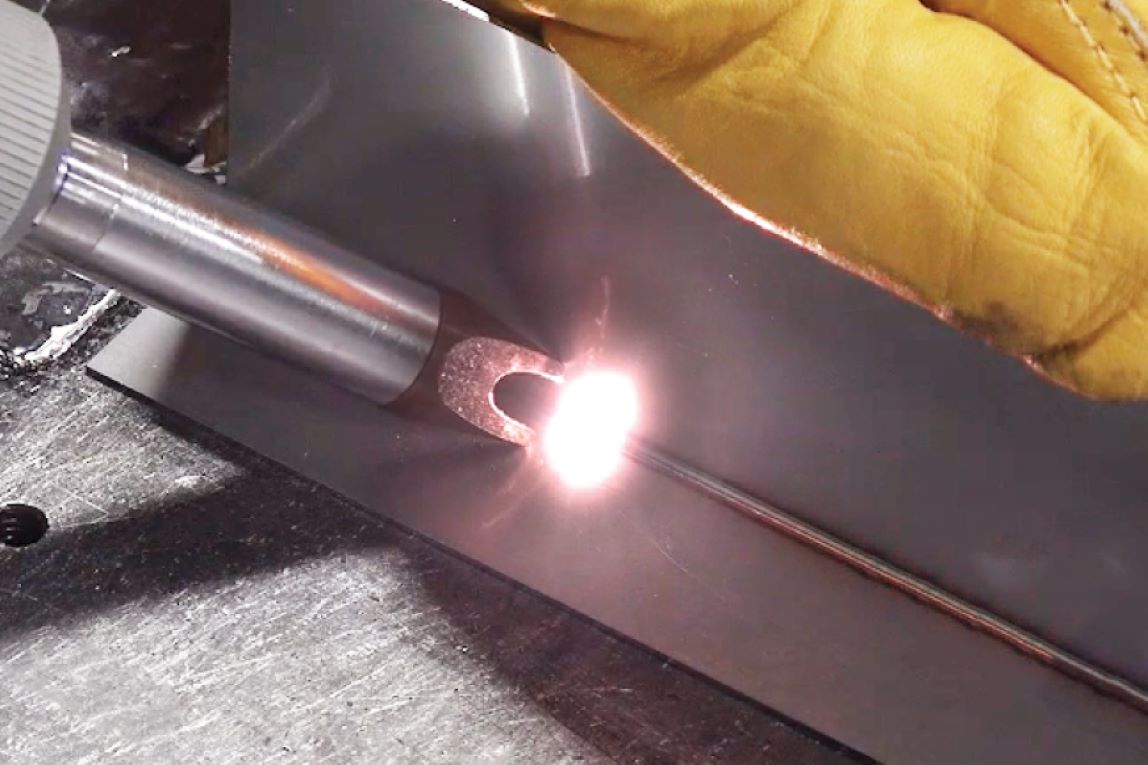From ovens to boilers and from mixing machines to grinders, producing industrial food processing equipment requires a high volume of welding operations. As in any industry, increasing productivity is a chief concern but food and beverage equipment manufacturers must also prioritize hygiene to ensure welds are food grade. To remain competitive, manufacturers must seek solutions that increase production speeds and minimize the risk of contamination. Handheld laser welding, using laser devices like LightWELD®, has emerged as the ideal solution for many in the food industry as an easy-to-use technology that enables faster, more consistent welds and new equipment design possibilities.
Handheld Laser Welding Keeps Things Clean
Industrial food and beverage equipment relies on more than just welds to join part features – manufacturers also make use of fasteners such as nuts, bolts, washers, and rivets. Unlike in other industries, the use of fasteners, as well as threaded holes, must be considered in relation to food contact areas. Incorrect use of fasteners creates difficult-to-clean geometry that form microcosms for bacterial growth. This risk imposes limitations on how equipment is designed, not to mention increased fabrication costs.
The number of fasteners required in a piece of equipment can only be reduced somewhat by traditional welding methods like MIG and TIG, which introduce significant heat input that can damage or distort sensitive features. Laser welding, by comparison, generates considerably less heat during the welding process and is used extensively across industries for thinner metal parts. This reduction in heat input compared to MIG and TIG opens more fabrication options to designers to help minimize fastener use and reduce material costs.
Handheld laser welding also produces very high-quality welds with excellent and hygienic finishes. The laser welding process is resistant to defects like microcracking, a concern when welding thinner joints using traditional methods, minimizing the risk of bacterial growth. Handheld laser welding devices can also be used to spot weld with no part contact required, eliminating common resistance spot welding concerns like bacteria-friendly indentations and asymmetrical welds caused by issues like tip pressure and alignment.

Post-weld laser cleaning is rust free after exposure to salt (left) whereas the uncleaned area shows significant oxidation (right).
Handheld laser welding devices like LightWELD also offer laser cleaning capabilities for pre-weld and post-weld cleaning. Pre-weld laser cleaning helps eliminate surface debris prior to welding that can cause unhygienic inclusions and other defects. Post-weld cleaning both improves visual appearance by removing discoloration and passivates stainless steel surfaces to resist corrosion and oxidation. Traditional weld cleaning methods are typically more time consuming and may themselves introduce additional safety or hygiene concerns.
Handheld Laser Welding Maximizes Productivity Amid Welding Labor Shortages
The welding industry has suffered from a labor shortage for years and this global deficit is only expected to grow. As a result, manufacturers have turned to handheld laser welding both to maximize the productivity of existing skilled welders and lower the barrier to entry for new welders.
One of laser welding’s key advantages is speed – welders can typically complete the same welds several times faster with laser welding when compared to MIG and TIG. While laser welding is not a true replacement for traditional methods, it is the ideal choice for welding a variety of joint types in a range of materials and thicknesses, notably up to 5/16” or 8 mm in stainless steels. For welding applications that are a good fit for laser welding, the speed, quality, and consistency is hard to beat.

Handheld laser welding makes creating a variety of high-quality joints faster and easier.
Laser welding is also surprisingly easy to learn, at least compared to traditional welding methods. MIG and TIG can take years to master and require a welder with experience, expertise, and excellent motor skills. By comparison, laser welding is significantly easier to learn, both for new and experienced welders.
Getting Started with Handheld Laser Welding
Handheld laser welding and cleaning solutions continue to help manufacturers create food grade welds in a wide variety of industrial equipment. If you are considering a handheld laser welding solution, an IPG laser welding expert is ready to help. Getting started is easy – send us a sample, visit one of our global application labs, or just tell us about your application.




